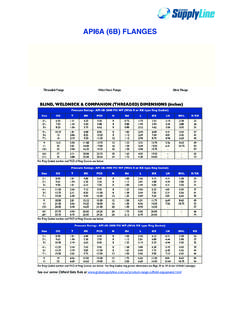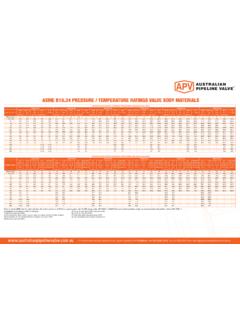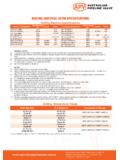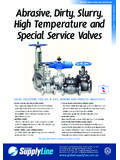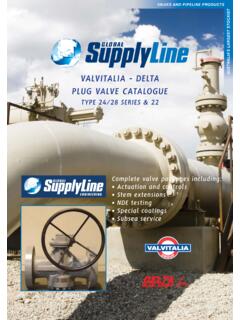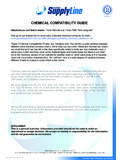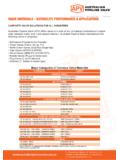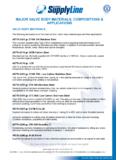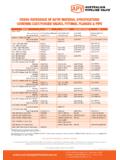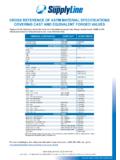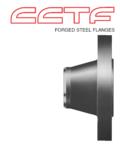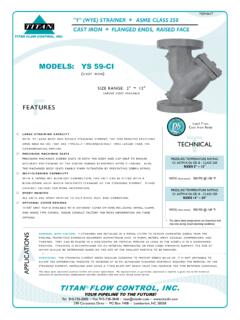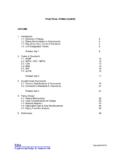Transcription of ANSI VALVE RATINGS, STANDARDS & DESIGN …
1 This overview attempts to provide just some of the factors to be considered when selecting and specifying ansi rated valves . The following information provides some of the DESIGN criteria users should evaluate and research when considering ASME VALVE suitability based on materials, pressure and temperature and interpreting relevant VALVE STANDARDS accordingly. DESIGN SCOPE This technical summary describes the DESIGN basis and STANDARDS that apply to Australian Pipeline VALVE (APV) ASME (B31 codes) valves and lists pressure-temperature ratings for APV valves and strainers. Australian Pipeline VALVE valves cstrainers. DESIGN BASIS overed by ASME STANDARDS include ball, check, gate, globe & plug valves as well as Process industry piping systems are designed in accordance with the ASME Codes for Ptypes of piping systems. , Power Piping and , Chemical and PetroleumRefinery Piping , relate to systems that utilise APV Piping, B31, which specifies DESIGN and construction requirements for all PROCESS VALVE STANDARDS Australian Pipeline VALVE ASME rated valves conform to ansi /ASME This sends.
2 It specifies DESIGN requirements, materials, pressure-temperature RATINGS, dimensions, wall thickness and manufacturing requirements. In the interest ofstandardisation, and its associated standard for flanges, ansi /ASME , have established eight pressure classes and many material groups for process system valves and flanges. also includes standard minimum wall thickness dimensionsfor each pressure class . and list the pressure-temperature ratings for each class and material covers process valves with flanged, butt weld, socket weld and threaded Materials:- Pressure-containing parts are manufactured from materials listed in , the B31 codes or ASME Boiler and Pressure Vessel Code Section VIII. DESIGN :- The DESIGN requirements of , including minimum wall thickness, are used for ASME standard APV valves . ansi VALVE ratings , STANDARDS & DESIGN ASME Boolcunda Avenue Salisbury Plain, South Australia 5109 Telephone +61 (0)8 8285 0033 Fax +61 (0)8 8285 Numerous other STANDARDS exist for non ansi rated valves such as API, BS, JIS, AS, MSS, DIN etc.
3 Australia Pipeline VALVE manufacture many valves in this category but omade to these STANDARDS can share ansi ratings . For example APV-Flowturn needlevalves are manufactured to MSS SP-99 which governs the material selection, DESIGN , RATINGS, testing and connection. The nominated cold working pressure (CWP) of these non ansi valves must be equated to ansi classes. Then the temperature rating must also be considered. These non ansi valves typically have a pressure/temperature chartfor each trim in some of the APV family of brands such as Flowturn and Superseal. valves The B31 piping codes require that component pressure-temperature ratings be equal to or greater than system DESIGN pressure and temperature to ensure system integrity and safety. Pressure and temperature requirements for both system DESIGN conditions and normal operating conditions should be considered in selecting the most suitable component. Other considerations:- When selecting a VALVE , the requirements of the system and effects outside the system should all be considered such as: Low temperature:- Applications for service below the CWP temperature range require special consideration.
4 Some materials lose impact strength and should not be used at low temperatures. Many non-metals become hard and lose their ability to seal. Most lubricants harden, which can make a VALVE inoperable. Humidity in the air can for ice in and around a cold VALVE , making it inoperable and may even cause damage. Environment:- Also consider the effect of the environment on VALVE function, materials, compatibility, ratings , installation, operation and maintenance. Examples of consideration: - Vthe system fluid. External sources of temperature overheating external partsshould also be taken into ratings , assume the temperature to be that of the VALVE body, dictated by - Atemperature ratings than the valves they operate, hence all heat sources must be corrosive environment may damage external body parts as well as seals, gaskets and lubricants not exposed to the system fluid, reducing the VALVE spressure containing and operating exposure can also affect a VALVE .
5 Water may enter a VALVE or actuatorand prevent operation particularly if it freezes. Dirt, dust, salt, mildew and mud canenter the VALVE or actuator openings and cause damage and prevent operation. ctuators, handles, solenoids and other accessories often have lower - - SYSTEM REQUIREMENTS OTHER STANDARDS The terminology used here is taken from B31, SP-99, , related terms are used in process industries. These terms may have quite different meanings in other industries. TERMINOLOGY Material strengths are defined by yield and tensile strengths, which are determined by a dof yield and tensile test on a sample. ASTM material specifications establish minimum values Ylonger return to its original length. At this point, the material has undergone permanentdeformation, or strength:- The stress at which the test specimen has elongated and will no Tensile strength:- The stress required to break a material when a test specimen is pulled in tension.
6 Allowable stress:- The value of stress used to determine the dimensions and pressure ris always less than the minimum yield and tensile strengths of the material and normallyis of piping systems, valves and other components. The value of allowable stress Safety factor:- The ratio between the allowable stress and the minimum tensile or yield sminimum tensile strength or two thrids of the minimum yield strength, whichever is less;in , it is based on one third of the minimum tensile strength or two thirds of theminimum yield strength, wichever is less. Table A below shows the DESIGN basis and the material specification of the material. In , the safety factor is based on one fourth of the MATERIAL STRESS, STRENGTH AND SAFETY FACTORS DESIGNMATERIALSPECIFICATIONM inimum tensilestrengthMinimum yieldstrengthAllowablestressTABLE TCWP or the system DESIGN pressure - which raises the stress level to a value close to the minimum yield strength of the component shell test and the system hydrostatic test are done at times the Shell test:- A test for valves , defined by , The purpose is to check for distortion and external leakage (but not seat leakage).
7 Requires valves to be tested with water at times the 100 F (38 C) VALVE rating for 15 seconds or longer. The VALVE is pmay be tested to MSS, BS or AS open. All APV valves are tested to API598 or API6D. Some Flowturn valves There are four main terminologies associated with VALVE pressure temperature ratings : Cpressure of a VALVE in ambient conditions, usually from -20 to 100 F (-28 to 37 C).old working pressure (CWP) rating:- The maximum allowable cold working Pressure rating:- The maximum allowable working pressure of the VALVE at the temperature given in the selected table. Ris assumed to be the same as the system fluid temperature:- The temperature of the pressure-containing shell of the VALVE . It Temperature ratings :- The maximum and minimum temperatures at which the VALVE can be used. STANDARDS serve to promote safety by aiding the designer in selecting system DESIGN must be considered to ensure safe, trouble-free performance whenselecting a VALVE .
8 VALVE function, materials compatibility, adequate ratings and proper installation, operation and maintenance are the responsibilities of the system designer and user. VALVE body metals properties:- Table B1 below shows a typical ansi temperature curve for a selected VALVE body material group . VALVE trim metal properties:- Table B2 demonstrates how often trim materials can pmaterials are usually chosen to equal or surpass the rating of the body, with some typesof valves , this is not always the case (especially with valves containing soft parts) andshould therefore be taken into reduce the temperature and pressure rating of the VALVE . Whilst trim TESTING VALVE ratings VALVE SELECTION VALVE trim soft parts properties:- Table B3 then demonstrates how non metallic VALVE pthe temperature rating of the VALVE . PTFE packing for instance on a stainless steel gateor O-rings and seat inserts on a trunnion mounted ball VALVE can reduce the pressure/temperature such as seat inserts, packings, O-rings, seats, liners etc.
9 Can further down-rate ! bodymaterial ratingsTABLE bodymaterialratingsNonmetallicmaterial ratings : VALVE ratingOthermetallicmaterialratingsTABLE B3"#$%!TEMPERATUREPRESSUREO ther metallicmaterial bodymaterialratingsTABLE Of course at cold working pressure, the metallic and non metallic trim components chosegiven ansi class rating of the VALVE . However this does not necessarily apply with nonANSI rated are normally equal than or superior to the body material and conform to the Niron valves , very large diameter valves etc. Just because you order valves to it betweenANSI class 150 flanges such as a rubber lined butterfly VALVE , knife gate valves ordiaphragm valves for instance, it may only have a class 125 rating even though it has acarbon steel body, as the rubber line down-rates even the cold working pressure. These valves may also have alternative rating systems such as PN, BS, AS, JIS or just a given cold working pressure (CWP).
10 On ansi rated valves :- Care should always be taken especially with lined valves , Other down rating factors:- Whilst integral end connections are normally matched to the stated working pressure rating and class rating of the VALVE , this is not always the case. For instance needle valves can be adapted with different end connections. Wafer style and lugged style lined butterfly valves , knife gate valves and also very large diameter valves can have a lower CWP than the flanges they mate with. After market pneumatic actuators may be fitted, sized based on pressure lower than the maximum allowable pressure of the VALVE itself. Final selection:- Once the VALVE and all its elements have been considered in terms of pressure and temperature, the user must ensure the VALVE has an actual higher rating than the maximum DESIGN pressure and temperature. The actual normal operating pressure & temperature will therefore fail safely within the rating of the VALVE itself.
